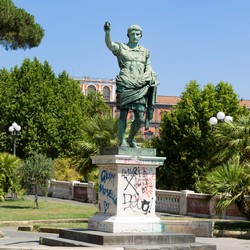Science weighs in on combating graffiti
Europe has impressive architectural heritage to show off. Sometimes these buildings are the target of vandals who deface facades with graffiti, while other times they fall victim to dirt and pollution. The EU-funded CLEANING HERITAGE(opens in new window) (Real long-term working conditions of anti-graffiti and self-cleaning coatings for their implementation in the protection of the European cultural heritage) project conducted studies to determine the effectiveness of protective and/or preventive coatings on heritage buildings. Often, the removal of graffiti and dirt is expensive and may be detrimental to weathered, porous facades. The project team considered the porosity of building materials, developing and testing one self-cleaning and three anti-graffiti coatings for concrete, limestone, sandstone and granite. Over a period of two years, the project team studied the impact and performance of these coatings. It conducted outdoor self-cleaning tests and subjected the materials to accelerated weathering in a UVB chamber. The results revealed that the anti-graffiti coatings were effective, but lost their adhesiveness with time. On the other hand, pressurised water cleaning removed anti-graffiti protection and increased coarseness, making it easy for graffiti to adhere once again. Overall, the project found that its testing results depend on the type of substrate. Self-cleaning coatings work satisfactorily on concrete, sandstone and limestone, but can brighten surfaces, for example. Every coating studied is effective to a certain degree, keeping in mind that in certain cases cleaning with a soft brush and detergent is better than pressurised water spray. The project has recommended further research studies on compatibility, effectiveness and durability of the many products on the market. The knowledge generated during CLEANING HERITAGE helps advance preventive ways to address challenges of anti-graffiti and self-cleaning coatings. The results have been disseminated in several European conferences and publications. Hopefully, they will lead to better products that can protect our heritage buildings more effectively from dirt and graffiti.







